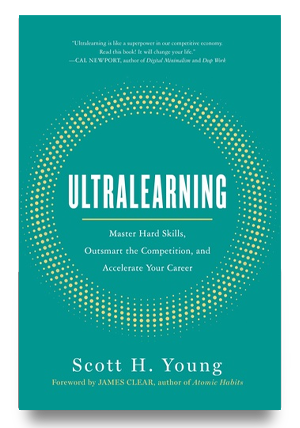
This post was written by Leo Babauta of ZenHabits.net
I’m going to take a wild leap and suggest that procrastination is a problem that plagues even the best of us. Yes, even Scott Young must procrastinate once in awhile. I surely do.
But even though I procrastinate, I find ways to get a lot done. I am the epitome of what Scott calls “productively lazy”.
This post, for example, was written as a means of putting off a more urgent article that I need to write by the end of today. But by procrastinating on that, I’ve written this, which I hope will be helpful for all procrastinators everywhere — and that means you.
Please note that I do not suggest that you do all of these — that’s an overwhelming task that would certainly be pushed back endlessly. Instead, choose one and try it. It will probably work for a little while. Then, when it stops working, choose another, and give that a go. With a palate of great procrastination hacks, you can never go wrong. And often, a combination of these will work fantastically.
- Form a Do It Now habit. Procrastination, like many things, is simply a bad habit. By replacing it with a positive habit — the Do It Now (DIFN) habit — you will kick procrastination’s butt. This will require concentrated effort for 30 days, but after that, it should be on autopilot. I put up a sign on my computer that says “DO IT NOW” and every time I feel like procrastinating, I look at the sign and get to work.
- Do Your MIT first. I have a rule that before I check my email or read my feeds, I have to do my Most Important Task first. I do it first thing in the morning, and then no matter what happens after that, I’ve done something very productive today. If you’ve been procrastinating on a very important task for some time, I suggest you do that first. Don’t allow yourself to do anything else until it’s done!
- 10-minute rule. If a task seems overwhelming, tell yourself that you’re only going to do it for 10 minutes. There’s nothing intimidating about 10 minutes. And more often than not, you end up doing more than 10 minutes after that initial hurdle of getting started is overcome.
- Break it down. Got an overwhelming task to handle? Break it up into much tinier tasks. I mean really tiny. Have a paper to write? Just write the headline. Or just do 10 minutes of the outline. Or just write the first sentence. That’s a task you can accomplish, and when you’re done, you feel great. Use that feeling of success to carry you to the next tiny task (“Write 2nd sentence”) and keep going from there.
- Love your work. Why do we procrastinate. Sometimes it’s because we don’t like what we’re doing. If that’s the case for you, you might want to consider a different job or a different line of work. But in any case, as much as possible, seek to do things you love, even within your current job. Not feeling like doing that task right now? Find another that’s more fun (not video games).
- 30-10. This is one of my favorites. I set a timer for 30 minutes, and then work like mad until the timer goes off. Then I set the timer for 10 minutes, and do something that I really want to do (email and feeds for me, maybe Twitter or Digg for you). Repeat as often as necessary. The key is sticking to your timer — don’t stop while the 30 minutes is still going, and don’t go beyond your 10-minute break.
- Set a deadline. Deadlines, for me and for many people, are one of the best tools for getting things done. If you set a deadline for a task, you are more likely to actually do it. For some, the pressure of a deadline isn’t felt until after the deadline has passed, but still. It has its uses.
- Put public pressure on yourself. The power of the deadline is best when combined with public pressure. If your boss, or a group of people, want something in by a certain date or time, you are more likely to bust your butt getting it done. If there isn’t any public pressure on a task, create it — email someone and promise to have it done by a certain time, and ask him or her to check on it at that time just to make sure you do it.
- Reward yourself. This has two benefits: 1) it makes you look forward to completing the task, so you can get your reward, and 2) it makes the process more enjoyable. It’s important to make the process pleasurable and fun, so you’re more likely to do it.
- Consider not doing it. If it’s something you’re really dreading, perhaps it’s something you shouldn’t do. This is not always an option, but sometimes I get requests to do stuff that eventually it turns out the requester didn’t really want too badly in the first place. Sometimes when I put something off, it’s no longer necessary by the time I am really ready to do it.
- Change to an “abundance mentality”. Instead of thinking about the problems and difficulty and obstacles, think about the possibilities and opportunities presented by this task or project. By thinking of it in this way, you are more likely to want to do something, knowing the reward and benefits that come from actually getting it done.
- Clear away distractions. Procrastination is much easier with games and IM and email being right there, ready to access. Turn off email notifications, clear away all other web pages, turn off games and other distractions on your computer, and clear off your desk. In fact, if you can disconnect the Internet, that’s best.
- (10+2)*5. Merlin Mann’s famous hack. Basically similar to the 30-10 hack, but shorter. 10 minutes of work, followed by a 2-minute break, and repeat. It works great.
- Procrastination dash. This is just a short burst of focused work — as short as a minute. It’s designed to get you out of procrastination mode.
- Track your time. Want to see just how much time you’re wasting? Track it. Just do a time log, even for one day. It will be enlightening, and it will make you much more aware of what you’re actually doing and what your time-wasters are. This is a sure way to get your procrastination under control.
- Prepare yourself. Often tasks are much easier, and we’re much more likely to get started, if we prepare for them first. Get the research done, get the tools ready, clear away distractions, get your coffee ready, and get going.
- Overcome your fears. What fears are blocking you from doing this task? Fear of failure? Fear of not being good enough? First imagine the worst thing that can happen. How bad is that? Often, if you give some thought to what can actually happen, you can get a handle on your fears, and you can find ways to overcome them.
- Get a task-master. Having trouble getting yourself going? Get someone else to push you and make sure you stop procrastinating. Enlist the help of a co-worker or family member. Make sure your task-master isn’t as forgiving as my wife is.
- Schedule it last-minute. Have an absolute deadline for a task that will take one hour? Schedule it so you don’t actually start on it until about an hour before deadline (well, give yourself a 30-minute cushion). Will a project take 2 days to complete? Schedule it 2 days before deadline. If you have absolutely no padded time in your schedule, you will have no choice but to get a move on.
- Structured procrastination. This is a beautiful idea — put your most important task at the top of your list (but make it something where the deadline can actually be pushed back), and put other important tasks right under that task. Well, in order to procrastinate on the top item, you’ll do the ones underneath it. That way you’ll get a lot done while procrastinating. The good thing is, if other more important tasks come along, they get added to the top, so the task that was formerly at the top will eventually get done.
Bonus hack: Procrascipline. A good list is even better if you throw in a bonus. This is an excellent one as well. From the Slacker Manager, the first rule of procrascipline is that you cannot ignore the task. The second rule is that you must put it on a list that you actually look at throughout the day. The third rule is that you must communicate your progress to others — whether you’ve actually made any progress or not (and if not, why not). These three rules actually work. Don’t procrastinate in doing the third step, though.
Read more posts by Leo Babauta at Zen Habits, including popular ones on Double Your Productivity, keeping your inbox empty, clearing your desk, becoming an early riser, and the Top 20 Motivation Hacks.


 I'm a Wall Street Journal bestselling author, podcast host, computer programmer and an avid reader. Since 2006, I've published weekly essays on this website to help people like you learn and think better. My work has been featured in The New York Times, BBC, TEDx, Pocket, Business Insider and more. I don't promise I have all the answers, just a place to start.
I'm a Wall Street Journal bestselling author, podcast host, computer programmer and an avid reader. Since 2006, I've published weekly essays on this website to help people like you learn and think better. My work has been featured in The New York Times, BBC, TEDx, Pocket, Business Insider and more. I don't promise I have all the answers, just a place to start.